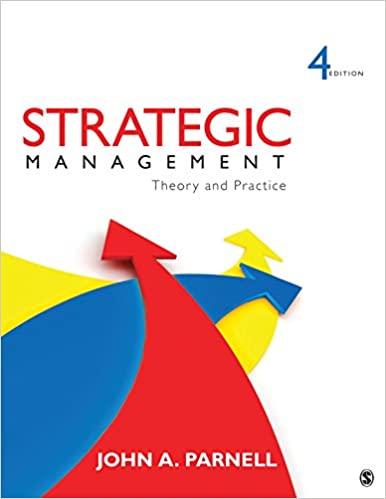American Express was formed in 1850 as a delivery services company but soon emerged as a leader
Question:
American Express was formed in 1850 as a delivery services company but soon emerged as a leader in travel-related services. In 1868, the firm developed a money order to compete with the government’s postal money order. In 1891, American Express introduced the notion of traveler’s checks.
During World War I, the U.S. government nationalized and consolidated all express delivery services. After the war, American Express incorporated as a provider of overseas freight and financial services and exchange provider. The famous American Express charge card was introduced in 1958. The firm acquired Fireman’s Fund American Insurance (which it later sold) and Equitable Securities in 1968.
Under the leadership of James Robinson, chief executive officer (CEO) from 1977 to 1993, American Express bought brokerage Shearson Loeb Rhoades in 1981 and investment banker Lehman Brothers in 1984, establishing a Shearson-Lehman business unit. Its 1987 launch of Optima, a revolving credit card (as opposed to its traditional charge card), did not succeed.
Following mounting losses, Harvey Golub was appointed CEO in 1993 and charged with turning around the firm.
In 1994, American Express divested its brokerage operations (as Shearson) and its investment banking (as Lehman Brothers). In 2001, the firm suffered from bad investments in belowinvestment grade bonds, resulting in a $1 billion loss. In addition, the firm’s employees at its New York City headquarters located across from the World Trade Center were displaced by the 2001 terrorist attacks. Its headquarters did not reopen until May 2002.
American Express has been active in acquisitions, divestments, and partnerships throughout the past decade. In 2004, the firm partnered with Industrial and Commercial Bank of China to issue its branded credit cards in that country. In 2005, American Express sold its American Financial business (formerly American Express Financial Advisors), the firm’s insurance and investments arm.
American Express experienced significant losses in 2008 and 2009 as a result of the financial crisis. The company received $3.4 billion in TARP (Troubled Asset Relief Program) funds in 2009 and repaid the amount within a few months. The firm has remained relatively cautious since then, trimming jobs in 2010 and again in 2011.
Today, American Express remains a leader in global travel, traveler’s checks, and credit cards. The firm has almost 100 million cardholders and more than 2,200 locations in more than 200 countries and is the world’s largest issuer of traveler’s checks. Approximately 80% of its revenue is derived from the United States.
Case Challenges
1. How has the financial crisis altered the competitive position for American Express? Explain.
2. The American Express card is not as widely accepted as those of its rivals Visa and MasterCard. How can American Express differentiate its credit card from these two competitors as well as a host of retailer-affiliated cards?
3. Should American Express seek future growth in the United States or in other countries?
Step by Step Answer:






